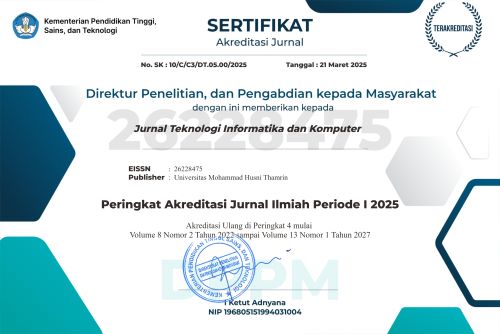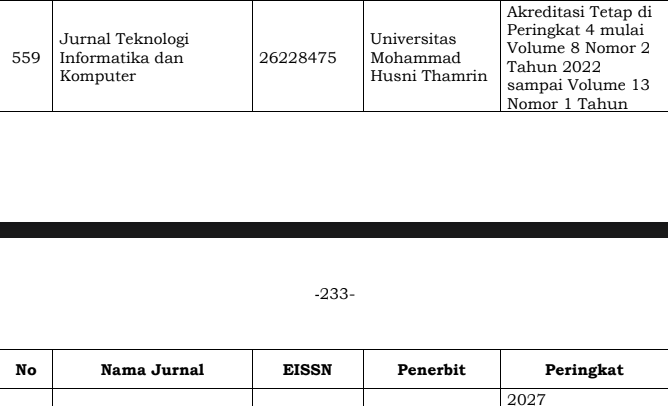Purchasing Prediction Using Machine Learning Algorithms for Optimizing Inventory Management
DOI:
https://doi.org/10.37012/jtik.v11i1.2522Abstract
Effective inventory management is a crucial element in company operations, especially in maintaining a balance between demand and supply. Good inventory management can reduce storage costs, increase product availability, and maximize company profits. However, the challenges that companies often face are the uncertainty of market demand and changes in trends that are difficult to predict. Along with technological developments, traditional methods of inventory management are starting to be replaced by data-based approaches and machine learning algorithms. The use of machine learning is not only limited to predicting purchasing needs, but can also be applied in various other business aspects. This research aims to optimize HP spare parts inventory management at Store X using the Long Short-Term Memory (LSTM) method. By analyzing sales data for 2023 which consists of 96,630 lines, the research applies systematic stages: data acquisition, preprocessing, exploratory data analysis, model building, and evaluation. The LSTM method is used to predict spare parts stock with significant accuracy, demonstrated through evaluation metrics: Mean Absolute Error (MAE) 12%, Mean Squared Error (MSE) 2%, and Root Mean Square Error (RMSE) 15%. The model successfully captured seasonal patterns and trends in sales data, proving its ability to forecast stock requirements. The research results show that the LSTM-based machine learning approach is effective in supporting inventory management decision making, helps reduce the risk of losses due to stock uncertainty, and increases the efficiency of managing HP spare parts inventory.
Downloads
Published
Issue
Section
Citation Check
License
Copyright (c) 2025 Reza Hamdi Prayetno, Rani Destika Purba, Kyrene Wirawan, Kelvin Sweet, Evta Indra

This work is licensed under a Creative Commons Attribution 4.0 International License.
Jurnal Teknologi Informatika dan Komputer allows readers to read, download, copy, distribute, print, search, or link to the full texts of its articles and allow readers to use them for any other lawful purpose. The journal allows the author(s) to hold the copyright without restrictions. Finally, the journal allows the author(s) to retain publishing rights without restrictions Authors are allowed to archive their submitted article in an open access repository Authors are allowed to archive the final published article in an open access repository with an acknowledgment of its initial publication in this journal.

Jurnal Teknlogi Informatika dan Komputer is licensed under a Creative Commons Attribution 4.0 International License.












